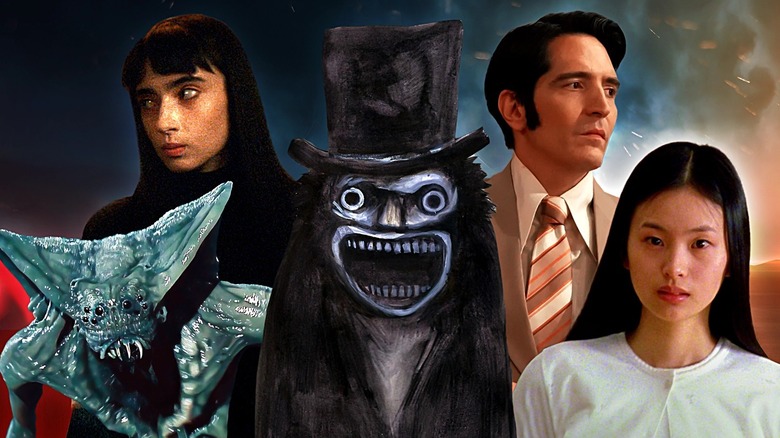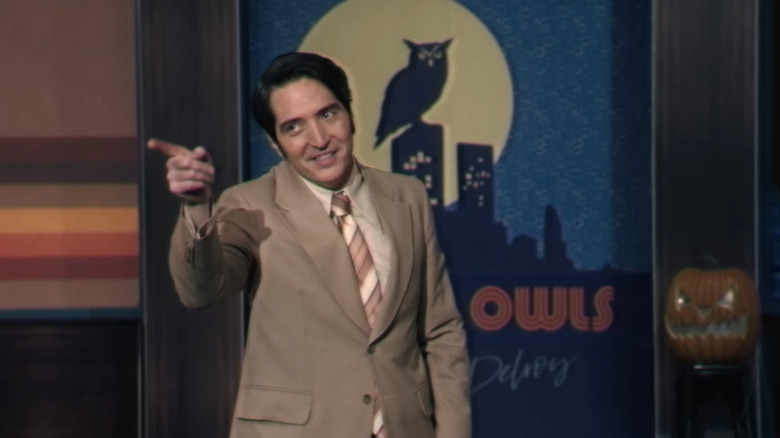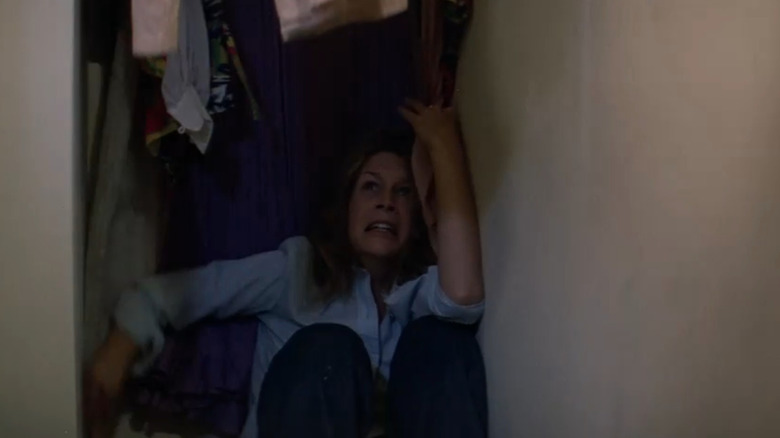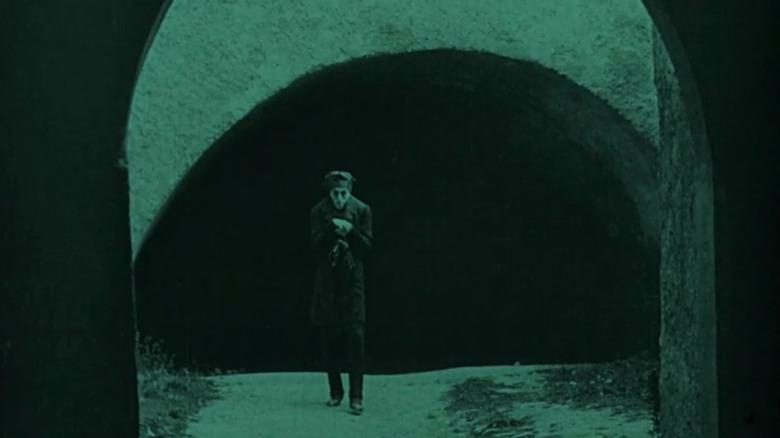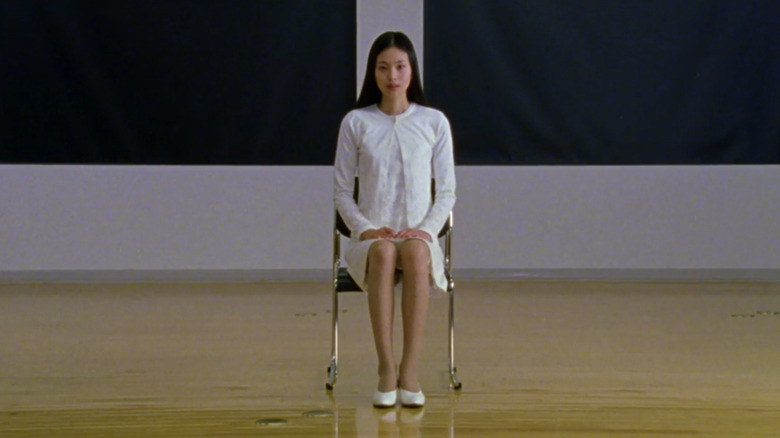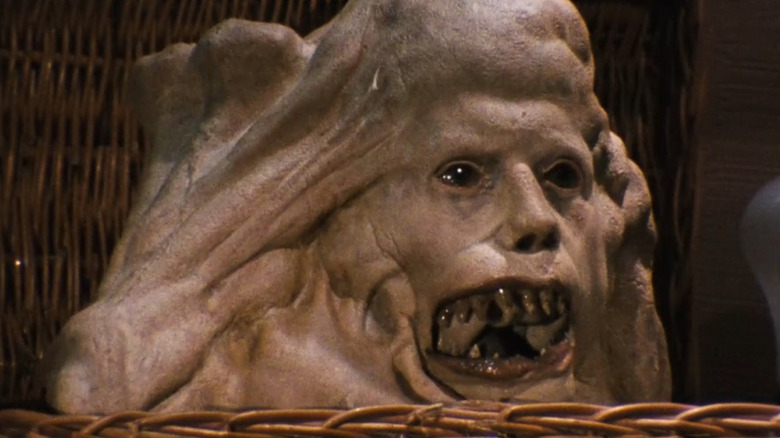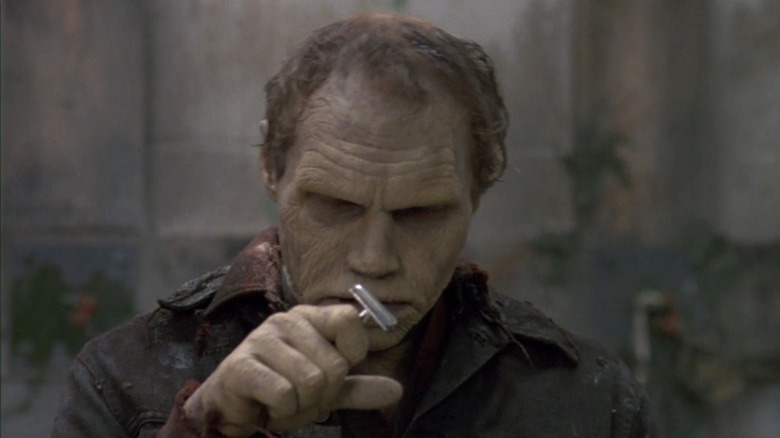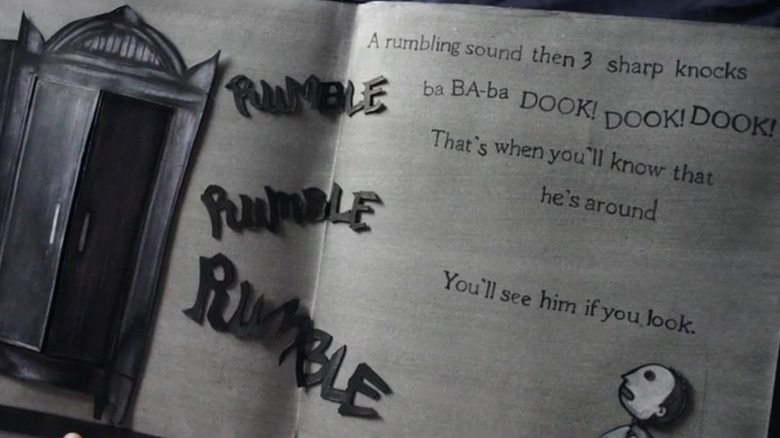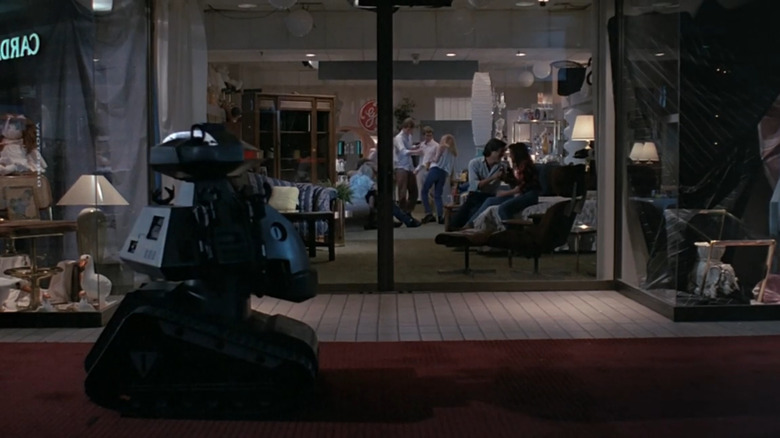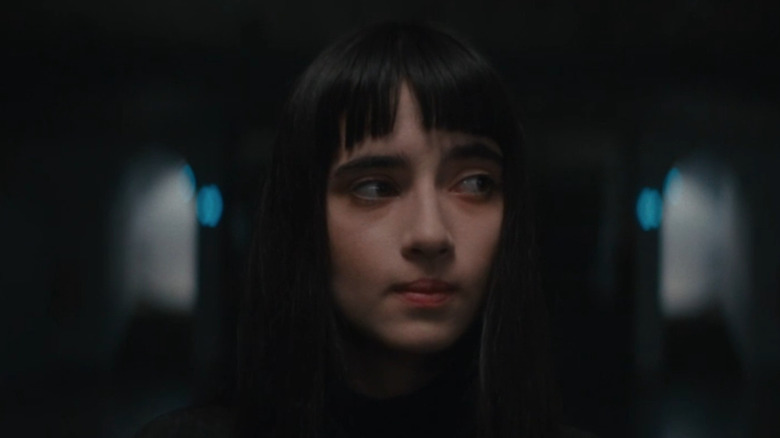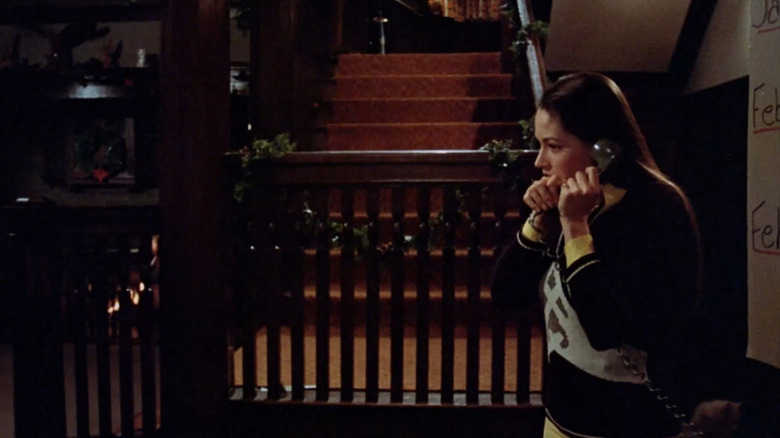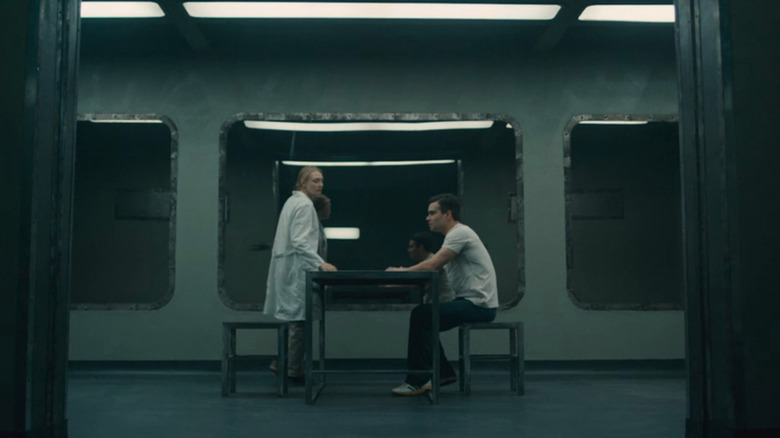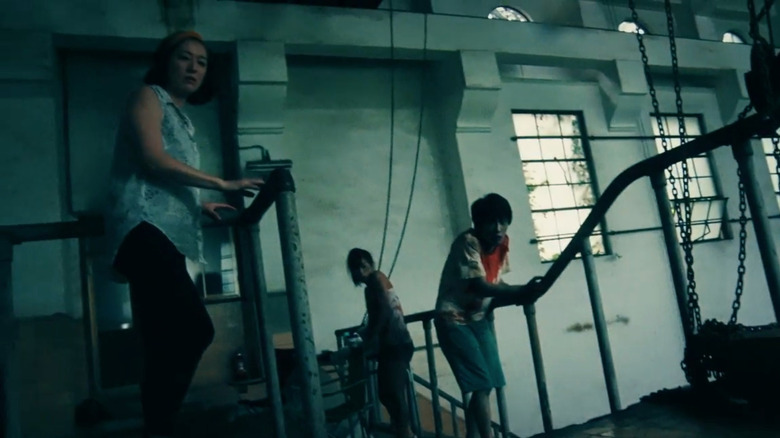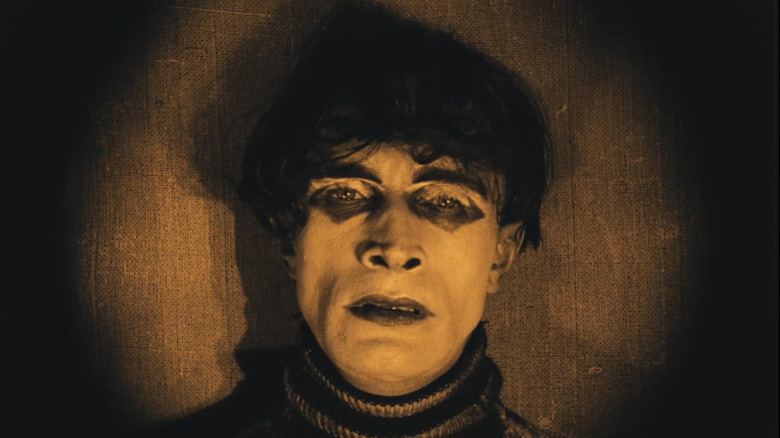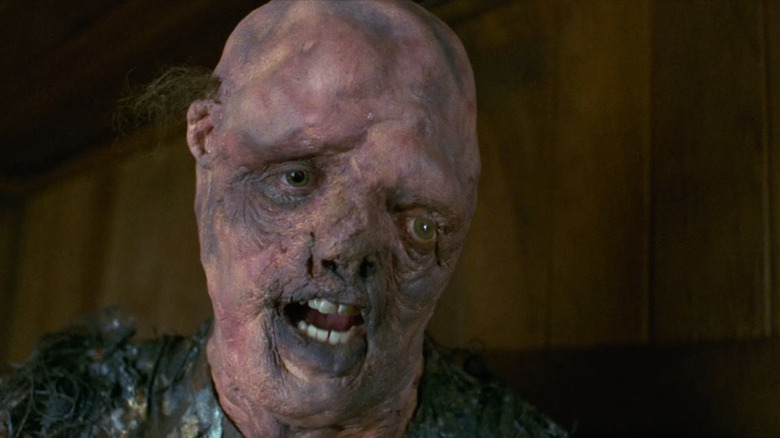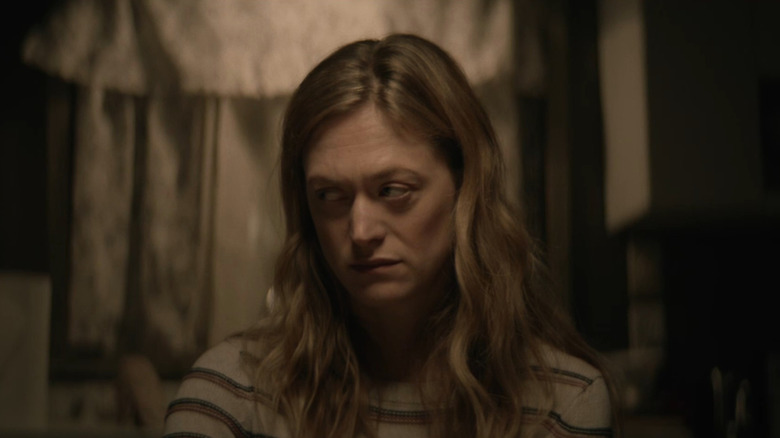The 15 Best Movies Streaming On Shudder
When it comes to niche streaming services, Shudder is near the top of the pack. It brings audiences all of the horror and thriller films they're craving — especially during the spooky fall months — with plenty of chills and scares to go around. Their catalog is surprisingly extensive, with acclaimed horror classics, underappreciated films with cult followings, and even a strong collection of original movies. If you like your entertainment a little darker, Shudder is the place to go.
Although the quality of their collection is relatively consistent, there are still some stand-outs that are a must-watch for both new audiences and horror fanatics alike. Whether you're trying to build up your knowledge of horror films or brushing up on old favorites for the Halloween season, these are the best, most interesting, and scariest films that Shudder has to offer. Pop some corn, get a blanket ready (in case you need to hide behind it during jump scares), and wait for an especially atmospheric thunderstorm — you won't regret it.
Late Night With the Devil
An inauspicious Shudder original film, "Late Night With the Devil" received instant acclaim and was regarded as one of the best horror films of the year. Not too bad for a direct-to-streaming movie, right? This one stars a masterful David Dastmalchian as talk show host Jack Delroy, who finds himself losing in the ratings against his biggest competitor, Johnny Carson. He's built his entire life around the show. And accordingly, would do just about anything to save it. During a special Halloween-themed episode, he goes for a huge ratings push by turning to the occult, featuring demon-possessed guests and even a few ghosts from his past.
Framed as a documentary covering the purportedly real-life events of Halloween 1977, "Late Night With the Devil" is a powerful look at the cost of fame and success, made all the more haunting through the grainy, slightly unsettling lens of decades-old late-night television. It even earned the blessing of one of the top names in horror.
Halloween
Even total newbies to the horror genre, have heard of "Halloween" — it's the granddaddy of the teen slasher film, a subgenre that would be replicated many times over the next few decades but rarely done better than what we see here in 1978. Jamie Lee Curtis stars as Laurie, a babysitter who's working on Halloween watching neighborhood children, when things start to take a turn for the worse.
Michael Myers, an inmate at a local psychiatric institution who was committed as a child after murdering his sister, escapes and goes on pretty violent rampage — one that catches Laurie in its crosshairs. As fellow teens fall one by one to his knife, Laurie struggles to survive an especially trying Halloween night. "Halloween" established Jamie Lee Curtis as the Scream Queen, and was so popular that it generated a number of sequels, spinoffs, and reboots over the years. While some of these follow-up films are better than others, few can compete with the original.
Nosferatu
One of the original examples of blatant copyright infringement in cinema, "Nosferatu" is a classic German expressionist film that helped define the modern interpretation of vampires. Liberally borrowed from Bram Stoker's "Dracula" (but with the names changed in some versions to avoid his estate from coming after the production), it revolves around Thomas Hutter, a young man who travels to Transylvania to broker a real estate deal, but gets a little more than he bargained for with the mysterious Count Orlok.
Although our spooky count is fooling absolutely no one with his human disguise, he is nonetheless able to establish a foothold in Germany, where he puts Hutter's wife Ellen in mortal danger. Now best remembered for its iconic image of a ghoulish Nosferatu rising unnaturally from its coffin, "Nosferatu" is a veritable horror classic, both for its own merits and the influence it had on the genre.
Audition
It would be pretty unfair not to include at least one piece of Japanese horror on this list, considering the country's impact on the genre as a whole. But unlike many of the most famous Japanese horror films, which deal with the supernatural and the occult, "Audition" taps into the terror of humanity. It begins inauspiciously enough: A sketchy businessman (Ryo Ishibashi) colludes with one of his producer friends to stage a fake audition. The girls will think they have a chance at appearing in a movie, but actually, he's scouting for a new girlfriend.
But when he begins to pursue Asami (Eihi Shiina) as a prospective match, he gets a little bit more than he bargained for. She's not exactly the most traditional would-be wife, as he soon learns. Released in 1999, "Audition" preceded the explosion of torture porn that would follow in the 2000s, and is gory and continually surprising in equal measure.
Basket Case
We love a bizarre little 1980s horror comedy as a palate cleanser for the so-called "elevated" horror. "Basket Case" tells the story of a young man who was born as a conjoined twin, although his brother Belial is more of a parasitic growth than anything else. When their father makes the decision to have Duane (Kevin Van Hentenryck) and Belial separated as children — even though this will almost certainly lead to Belial's death — it's a traumatic experience for all involved. And now grown, Duane is on a revenge mission on the doctors who performed the surgery (with, as the title suggest, Belial in tow, riding along in a wicker basket).
But although Duane has a strong (albeit extremely toxic) relationship with his brother, there are moments when he becomes distracted by the pleasures of a young man with his entire life ahead of him, drawing Belial's ire. "Basket Case" is a quirky, low-budget horror with some incredibly fun practical effects, and while there aren't too many real scares to speak of, it's an interesting enough production to add to your list.
Day of the Dead
Each of George A. Romero's zombie films has a little something to offer in terms of social commentary, and "Day of the Dead" is no exception, setting its sights on the American military-industrial complex. In a landscape where the zombie outbreak has been somewhat controlled, an approximation of civilization has been rebuilt in underground bunkers populated by soldiers and scientists. The two groups have never exactly gotten along, and "Day of the Dead" sees these tensions rise to a boiling point — especially after a senior doctor begins experimenting on captured zombies in an attempt to reclaim their humanity, an effort the military views as dangerous and counterproductive.
"Day of the Dead" has its fair share of violent zombie hijinks, but there's an emotional heart to the story that gives it depth beyond what we've come to expect from many films in the same genre. The innate human desire to cling to vestiges of society is palpable throughout "Day of the Dead," making what they've lost all the more stark.
The Babadook
Credit where credit's due: The ultra-creepy character of the Babadook became an instant horror icon upon the initial release of this film, serving as the inspiration for countless Halloween costumes around the world. "The Babadook" centers around an Australian mother and her son, Samuel, who are struggling through their day-to-day lives in the absence of her husband, who died in a car crash while she was in labor with their son.
After Samuel and his mother read the children's book The Babadook, the bizarre, top-hatted character becomes a constant presence in their lives, apparently causing strange and disturbing events to befall them and haunting the mother with unsettling visions. A commentary on the horrors of parenting, especially for a single mother who seems to be largely without a support structure to help her along, "The Babadook" is a small-scale but nonetheless profoundly frightening horror film that made a strong impression on audiences.
Chopping Mall
Well before AI reared its ugly head, horror movies have been warning people about the dangers of technology run amok. "Chopping Mall" — despite the fact that there's no actual chopping at any point in the film — adds its voice to the chorus. A mall celebrates its new trio of security guard robots designed to keep the teenage patrons in line, but things go pear-shaped when an electrical storm messes with their programming, turning them into literal killbots.
This spells trouble for a group of young employees, who are having an after-hours party at their store, and have to fend off the rogue robots with everything they have. Charmingly low-budget and unabashedly silly, "Chopping Mall" is light on actual frights, but is nonetheless the type of schlocky '80s classic that easily builds a cult following around it — especially since it stars one of the decade's premier horror actresses, Kelli Maroney, who was also in the equally underrated "Night of the Comet."
Humanist Vampire Seeking Consenting Suicidal Person
If you fell in love with "Buffy the Vampire Slayer" back in the '90s, "Humanist Vampire Seeking Consenting Suicidal Person" might just be a new favorite. A French Canadian production out of Montreal, this expertly-named film stars Sara Montpetit as Sasha, a young vampire with a big problem. Unlike the rest of her vampiric family, who relish the taste of blood and the thrill of the hunt that goes along with it, Sasha struggles with the idea of hurting people and can't bring herself to kill. She only sprouts her fangs when she happens upon Paul (Félix-Antoine Bénard) when he's on the brink of jumping off a building, although he ultimately doesn't go through with it.
But the encounter gives her an idea: If she can only drink from people who genuinely want to end their lives, that might just be the unconventional yet ethical workaround that will allow her to feed. A quirky, surprisingly sweet film that's part horror, part unconventional romance, "Humanist Vampire Seeking Consenting Suicidal Person" might just be the most unique entry into the vampire genre we've seen yet.
Black Christmas
Predating the massive slasher boom of the late 1970s, "Black Christmas" is possibly the only one among its contemporaries that's so unsettling it leaves you feeling a little bit sick to your stomach. Set in a sorority house just before the Christmas break, the film features an ensemble cast of young women, whose characters are plagued by mysterious phone calls. When they answer, all they hear is heavy breathing and unintelligible speech, until finally, the voice threatens to kill them.
Unlike many college students in horror films, the girls are freaked out enough by these calls to take logical measures to protect themselves. But what they don't know is that the killer has already broken into their house and plans to pick them off one by one. The sense of foreboding in "Black Christmas" is powerful, and with the handful of extremely chilling images peppered throughout the film, it leaves more of a lingering impact on the psyche than many of its better-known counterparts.
Sputnik
Russian filmmakers are perhaps better known for political dramas or social satires, but with "Sputnik," first-time director Egor Abramenko launches himself on the scene as the visionary behind one of the best science fiction-tinged horror films in recent years. In the midst of the Cold War, the Russian cosmonaut Konstantin Veshnyakov (Pyotr Fyodorov) is kept in quarantine after finding himself the sole survivor of a mysterious accident in space.
As he's interviewed by the shrewd psychiatrist Tatyana Yuryevna Klimova (Oksana Akinshina) to attempt to help him remember what happened to him during those crucial moments, it becomes evident that in spite of being the only cosmonaut to survive the crash, he has not returned alone. In addition to the slow-burning tension that builds between these two characters, "Sputnik" features some of the best creature design that we've seen in quite some time, with an alien that is both cinematically unique and objectively creepy-looking. It's just a shame this one came out when we were all experiencing our very own quarantines during COVID-19, because it would have been a lot of fun to see on the big screen.
One Cut of the Dead
A film within a film (within a film, within a film, and so on), "One Cut of the Dead" details the efforts of a production team to make a zombie flick that goes horribly awry. We start off watching the shooting of "True Fear," where the maniacal director is so unimpressed with his actors' performances that he decides to force them to go Method, by using a pentagram to actually summon the undead for them to fight off. Then, we see the backstory of the film, as the real-life director within its narrative reluctantly agrees to helm a made-for-TV zombie movie that is all shot in one continuous take — a recipe for disaster with a million ways to go wrong.
And finally, we re-watch the making of the film, this time seeing the behind-the-scenes artistry that allows them to execute all of the twists and turns of "True Fear" in real time. A fresh and exciting take on the zombie genre, "One Cut of the Dead" is pure innovation.
The Cabinet of Dr. Caligari
Released in the late 1910s, "The Cabinet of Dr. Caligari" holds the prodigious honor of being one of the first modern horror films as well as one of the first to feature a twist ending. Created in the style of German expression, with harsh, distorted angles and abounding shadows, it tells the story of an ordinary young man who becomes embroiled in conflict with the malevolent Dr. Caligari and his sleepwalking assassin Cesare (played by classic Hollywood staple Conrad Veidt in one of his early roles).
Created in a funhouse mirror of madness and sanity, "The Cabinet of Dr. Caligari" captures all of the anxiety and distrust that dominated popular thought in post-World War I Germany. Atmospheric in a way that makes it appealing even to modern viewers who would otherwise balk at watching a silent film, this German horror film genuinely stands the test of time.
The Toxic Avenger
Rise up, Team Troma! "The Toxic Avenger" is a patently ridiculous film, and it wears its absurdity on its sleeve. Much like Darth Vader in the original "Star Wars" series, our hero Melvin Ferd, who is bullied into a toxic waste dump and transformed into the titular superhero, is played by three different actors.
Mark Torgl plays the scrawny version of Melvin, a janitor at a local gym and a subject of ridicule to basically everyone he encounters. Mitch Cohen plays the extremely buff but physically deformed Melvin, who uses his newfound strength and agility to fight the swathes of criminals and other creeps that populate the underbelly of Tromaville. And lastly, Kenneth Kessler is the voice of the character once he's transformed. "The Toxic Avenger" never dreams of taking itself too seriously, as its main character becomes the bizarre hero that Tromaville deserves, and darned if we don't fall in love with him as well.
The Dark and the Wicked
Not to put too fine a point on it, but if we see Marin Ireland's name on a cast list for a horror movie, we are seated — the woman knows how to unsettle with the best of them. And that's exactly where "The Dark and the Wicked" excels: In its most unsettling moments. It stars Ireland as Louise, who returns to her childhood home after the suicide of her mother. This is a place that she's immediately uncomfortable in and can't wait to leave, and it's not hard to see why: There's a spiritual heaviness to the house that's impossible to ignore, and that's before you dive into the fact that it's more than likely inhabited by a demonic presence.
Louise and her brother Michael (Michael Abbott Jr.) are constantly interacting with figures who seem to want to help them but then turn out to be malevolent forces, and are faced with nightmarish visions designed to unseat their sense of reality. Less terrifying and more packed full of unceasing dread, "The Dark and the Wicked" is smotheringly bleak.
